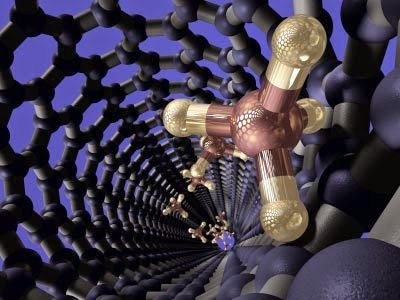Here Are The Top 5 Emerging Technologies For 2014
1. Body-adapted Wearable Electronics
"These virtually invisible devices include earbuds that monitor heart rate, sensors worn under clothes to track posture, a temporary tattoo that tracks health vitals and haptic shoe soles that communicate GPS directions through vibration alerts felt by the feet."The applications are many and varied: haptic shoes are currently proposed for helping blind people navigate, while Google Glass has already been worn by oncologists to assist in
surgery via medical records and other visual information accessed by voice commands."
2. Nanostructured Carbon Composites
"Emissions from the world’s rapidly-growing fleet of vehicles are an environmental concern, and raising the operating efficiency of transport is a promising way to reduce its overall impact.
"New techniques to nanostructure carbon fibers for novel composites are showing thepotential in vehicle manufacture to reduce the weight of cars by 10% or more. Lighter cars need less fuel to operate, increasing the efficiency of moving people and goods and reducing greenhouse gas emissions."
3. Mining Metals from Desalination Brine
As freshwater continues to dwindle, desalinating seawater has emerged as an option. "Desalination has serious drawbacks, however. In addition to high energy use, the process produces a reject-concentrated brine, which can have a serious impact on marine life when returned to the sea.
"Perhaps the most promising approach to solving this problem is to see the brine from desalination not as waste, but as a resource to be harvested for valuable materials. These include lithium, magnesium and uranium, as well as the more common sodium, calcium and potassium elements."
4. Grid-scale Electricity Storage
"There are signs that a range of new technologies is getting closer to cracking [challenges]. Some, such as flow batteries may, in the future, be able to store liquid chemical energy in large quantities analogous to the storage of coal and gas.
"Various solid battery options are also competing to store electricity in sufficiently energy-dense and cheaply available materials. Newly invented graphene supercapacitors offer the possibility of extremely rapid charging and discharging over many tens of thousands of cycles. Other options use kinetic potential energy such as large flywheels or the underground storage of compressed air."
5. Nanowire Lithium-ion Batteries
"Able to fully charge more quickly, and produce 30%-40% more electricity than today’s lithium-ion batteries, this next generation of batteries could help transform the electric car market and allow the storage of solar electricity at the household scale. Initially, silicon-anode batteries are expected to begin to ship in smartphones within the next two years."




No comments:
Post a Comment